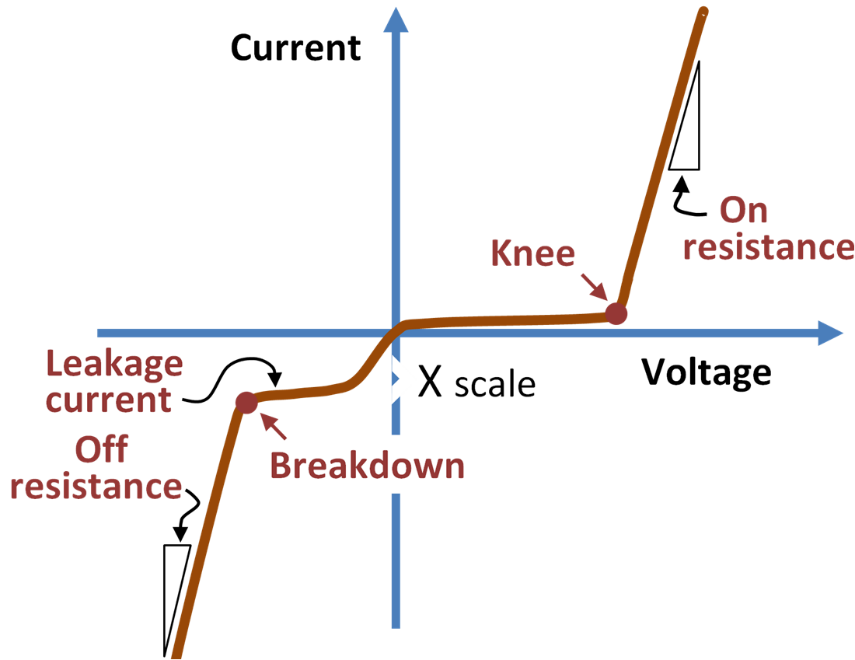
What is knee voltage?
Answer
415.2k+ views
Hint: When a voltage is applied to the forward characteristics of a diode, the junction rapidly expands. The terms "knee voltage" and "cut in voltage" refer to the same thing.
Complete answer:
Knee voltage or cut-in voltage of PN junction diode is the voltage at which the forward-biased diode begins to conduct.
The barrier potential or built-in potential is created when the p- and n- junctions are linked. When the positive terminal of the battery is connected to the anode and the negative terminal is connected to the cathode, the diode is forward biased and will not conduct unless the battery voltage is greater than the barrier potential. The germanium and silicon diodes have barrier potentials of
Knee point voltage, also known as diode cut-in voltage, is the minimum voltage at which the diode begins to conduct heavily and current begins to increase rapidly in a forward biased state. The concept of the diode's knee point voltage can be further appreciated by looking at the diode's forwarding properties.

Note:
The diode is forward biased by applying a positive and negative voltage at the anode and cathode of the diode respectively. The applied voltage is increased gradually from zero voltage. The silicon diode does not conduct till voltage reaches
Complete answer:
Knee voltage or cut-in voltage of PN junction diode is the voltage at which the forward-biased diode begins to conduct.
The barrier potential or built-in potential is created when the p- and n- junctions are linked. When the positive terminal of the battery is connected to the anode and the negative terminal is connected to the cathode, the diode is forward biased and will not conduct unless the battery voltage is greater than the barrier potential. The germanium and silicon diodes have barrier potentials of
Knee point voltage, also known as diode cut-in voltage, is the minimum voltage at which the diode begins to conduct heavily and current begins to increase rapidly in a forward biased state. The concept of the diode's knee point voltage can be further appreciated by looking at the diode's forwarding properties.

Note:
The diode is forward biased by applying a positive and negative voltage at the anode and cathode of the diode respectively. The applied voltage is increased gradually from zero voltage. The silicon diode does not conduct till voltage reaches
Recently Updated Pages
Master Class 9 General Knowledge: Engaging Questions & Answers for Success

Master Class 9 English: Engaging Questions & Answers for Success

Master Class 9 Science: Engaging Questions & Answers for Success

Master Class 9 Social Science: Engaging Questions & Answers for Success

Master Class 9 Maths: Engaging Questions & Answers for Success

Class 9 Question and Answer - Your Ultimate Solutions Guide

Trending doubts
Give 10 examples of unisexual and bisexual flowers

Draw a labelled sketch of the human eye class 12 physics CBSE

Differentiate between homogeneous and heterogeneous class 12 chemistry CBSE

Differentiate between insitu conservation and exsitu class 12 biology CBSE

What are the major means of transport Explain each class 12 social science CBSE

Draw a diagram of a flower and name the parts class 12 biology ICSE




